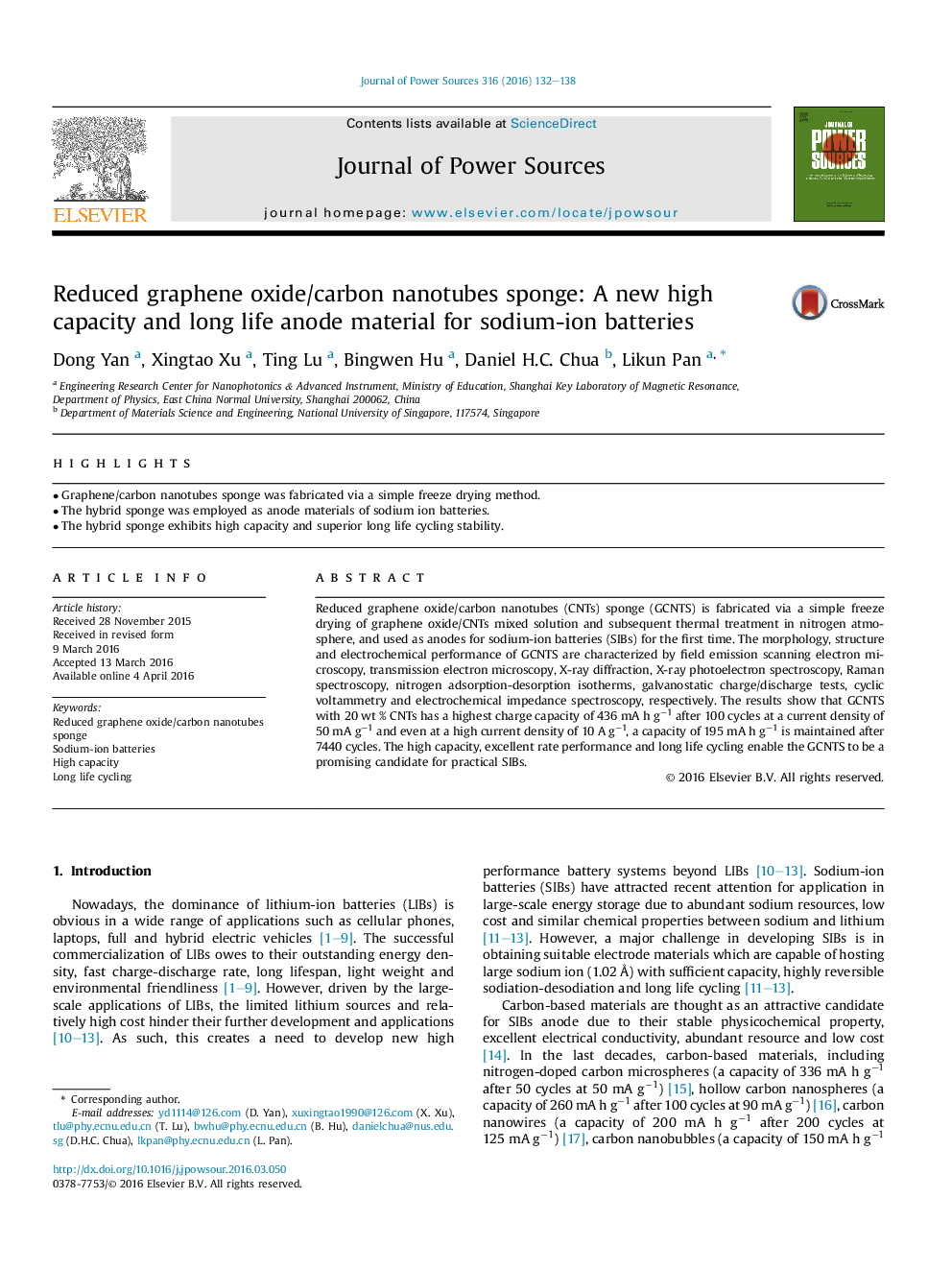| کد مقاله | کد نشریه | سال انتشار | مقاله انگلیسی | نسخه تمام متن |
|---|---|---|---|---|
| 1292196 | 1497916 | 2016 | 7 صفحه PDF | دانلود رایگان |
• Graphene/carbon nanotubes sponge was fabricated via a simple freeze drying method.
• The hybrid sponge was employed as anode materials of sodium ion batteries.
• The hybrid sponge exhibits high capacity and superior long life cycling stability.
Reduced graphene oxide/carbon nanotubes (CNTs) sponge (GCNTS) is fabricated via a simple freeze drying of graphene oxide/CNTs mixed solution and subsequent thermal treatment in nitrogen atmosphere, and used as anodes for sodium-ion batteries (SIBs) for the first time. The morphology, structure and electrochemical performance of GCNTS are characterized by field emission scanning electron microscopy, transmission electron microscopy, X-ray diffraction, X-ray photoelectron spectroscopy, Raman spectroscopy, nitrogen adsorption-desorption isotherms, galvanostatic charge/discharge tests, cyclic voltammetry and electrochemical impedance spectroscopy, respectively. The results show that GCNTS with 20 wt % CNTs has a highest charge capacity of 436 mA h g−1 after 100 cycles at a current density of 50 mA g−1 and even at a high current density of 10 A g−1, a capacity of 195 mA h g−1 is maintained after 7440 cycles. The high capacity, excellent rate performance and long life cycling enable the GCNTS to be a promising candidate for practical SIBs.
Journal: Journal of Power Sources - Volume 316, 1 June 2016, Pages 132–138
